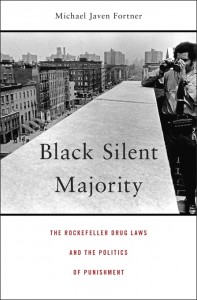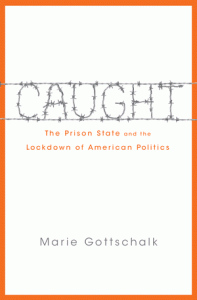For more on this topic, join us at the Murphy Institute on October 19th for this month’s Labor Forum: Black Lives Matter & the Fight for Fifteen: A New Social Movement?
When looking to reform our obviously broken criminal justice and carceral system, at what point must we examine the structural causes of urban crime? Can we address some of the damning injustices of our criminal justice system without first addressing urban poverty and the conditions that produce and uphold it?
 The latest issue of Dissent Magazine features a debate from two corners of the Murphy Institute. Murphy Prof. Michael Javen Fortner, whose new book Black Silent Majority: The Rockefeller Drug Laws and the Politics of Punishment came out to wide coverage and acclaim this fall, argues that we need to begin by taking an honest look at the roots and effects of urban crime if we want to achieve meaningful and enduring criminal justice reform.
The latest issue of Dissent Magazine features a debate from two corners of the Murphy Institute. Murphy Prof. Michael Javen Fortner, whose new book Black Silent Majority: The Rockefeller Drug Laws and the Politics of Punishment came out to wide coverage and acclaim this fall, argues that we need to begin by taking an honest look at the roots and effects of urban crime if we want to achieve meaningful and enduring criminal justice reform.
Meanwhile, Marie Gottschalk, professor of political science at the University of Pennsylvania, member of the New Labor Forum editorial board, and writer of Caught: The Prison State and the Lockdown of American Politics, argues, “Alleviating the poverty and income inequality that are at the root of extraordinarily high levels of violent crime in certain communities will take some time. In the meantime, no compelling public safety concern justifies keeping so many people from these communities locked up or otherwise ensnared in the carceral state.”
University of Pennsylvania, member of the New Labor Forum editorial board, and writer of Caught: The Prison State and the Lockdown of American Politics, argues, “Alleviating the poverty and income inequality that are at the root of extraordinarily high levels of violent crime in certain communities will take some time. In the meantime, no compelling public safety concern justifies keeping so many people from these communities locked up or otherwise ensnared in the carceral state.”
From Fortner’s article, “Beyond Criminal Justice Reform”:
Real criminal justice reform demands profound social change. The fixation on severe sentences and police brutality masks a hard, uncomfortable truth: our modern criminal justice system was produced by a cynical white elite, with the support of a large swath of the black population. The fear mongering used by the former is bound up in the genuine grievances and fears of the latter. Harsh statutes can be amended, and law enforcement can be retrained, monitored, and denied military-style weapons and equipment. But violence and disorder will persist. And they will continue to devastate communities subject to the worst effects of unbridled capitalism, the conservative assault on redistributive schemes, and frequent progressive quiescence in the face of the two.
While the residents of poor and working minority neighborhoods should not have to endure discourteous, harassing, and reckless policing, neither should they have to brave the perpetual disquiet of urban decline. Disadvantaged citizens deserve equality and security, civil liberty, and public safety. Curbing excessive patrolling of low-income areas and taming extreme punishments for minor offenses will partly resolve our new American dilemma. But true reform requires policies that will also guarantee public safety for all the families of color that are forced to endure the daily terror of urban crime.
From Gottschalk’s article, “Raze the Carceral State”:
We need to resist the belief that the only way to raze the carceral state is to tackle the root causes of crime—massive unemployment, massive poverty, and high levels of social, political, and economic inequality. The U.S. penal system is the result of policies that can be dismantled in several years even if these structural determinants of crime persist. As a panel of experts from the National Academy of Sciences recently concluded, changes in public policies, not rising crimes rates, were the main engines of the decades-long spike in the incarceration rate.
An overemphasis on the structural causes of crime overshadows the fact that about half of the people in state prisons are serving time today for nonviolent offenses, many of them property or drug offenses that would not warrant a sentence in many other countries. Many others are serving savagely long sentences for violent offenses even though they no longer pose serious threats to public safety.
Comprehensive changes in penal policy, not an assault on structural problems and the root causes of crime, have been the main drivers of successful decarcerations elsewhere, including Finland in the 1960s and `70s, Germany in the 1980s, and California under Governor Ronald Reagan. Support for reentry is an important and noble cause. But the focus of reform needs to expand way beyond the people who are being released. Reducing the number of people who are sent to jail or prison in the first place and slashing sentence lengths and time served for future and current prisoners must be top priorities. Criminal justice reform should be guided by the principle that lengthy sentences should be reserved for people who continue to pose major threats to public safety.
In many ways, the debate boils down to our order of operations. Where and how and when can we begin?
For the full — and fascinating — debate between these two incisive thinkers, check out the latest issue of Dissent.



